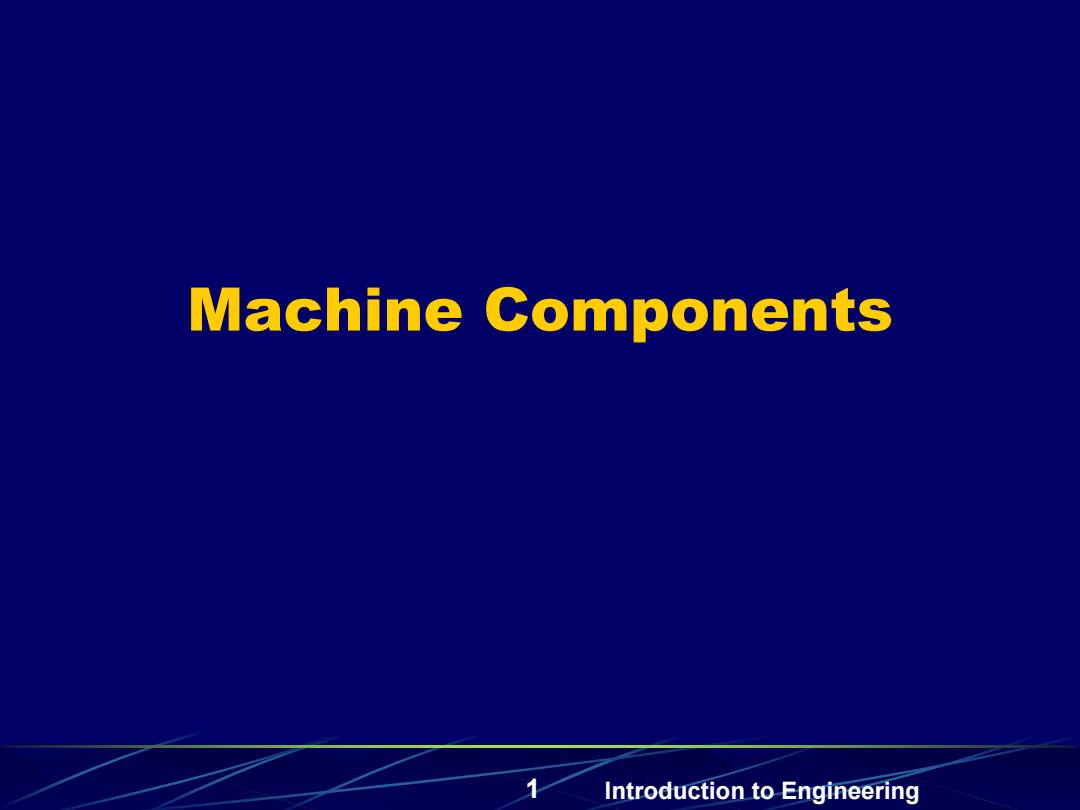
Machine Components Introduction to Engineering
1 Introduction to Engineering Machine Components
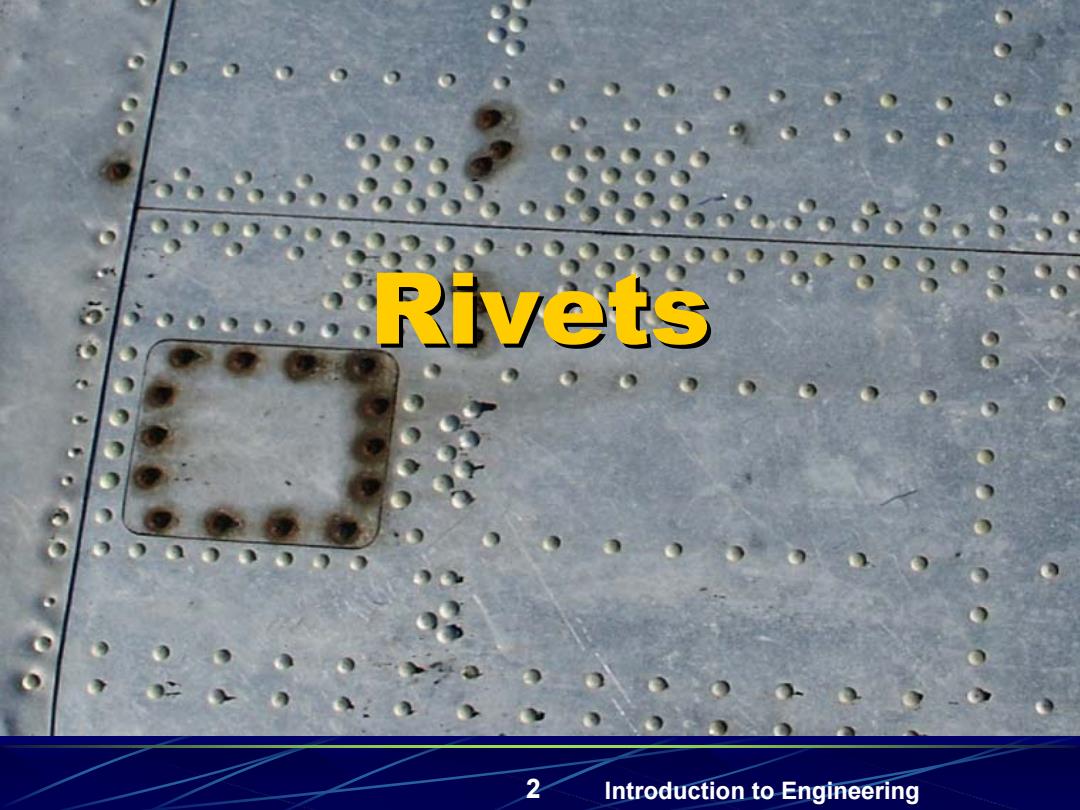
Rivets 2 Introduction to Engineering
2 Introduction to Engineering Rivets
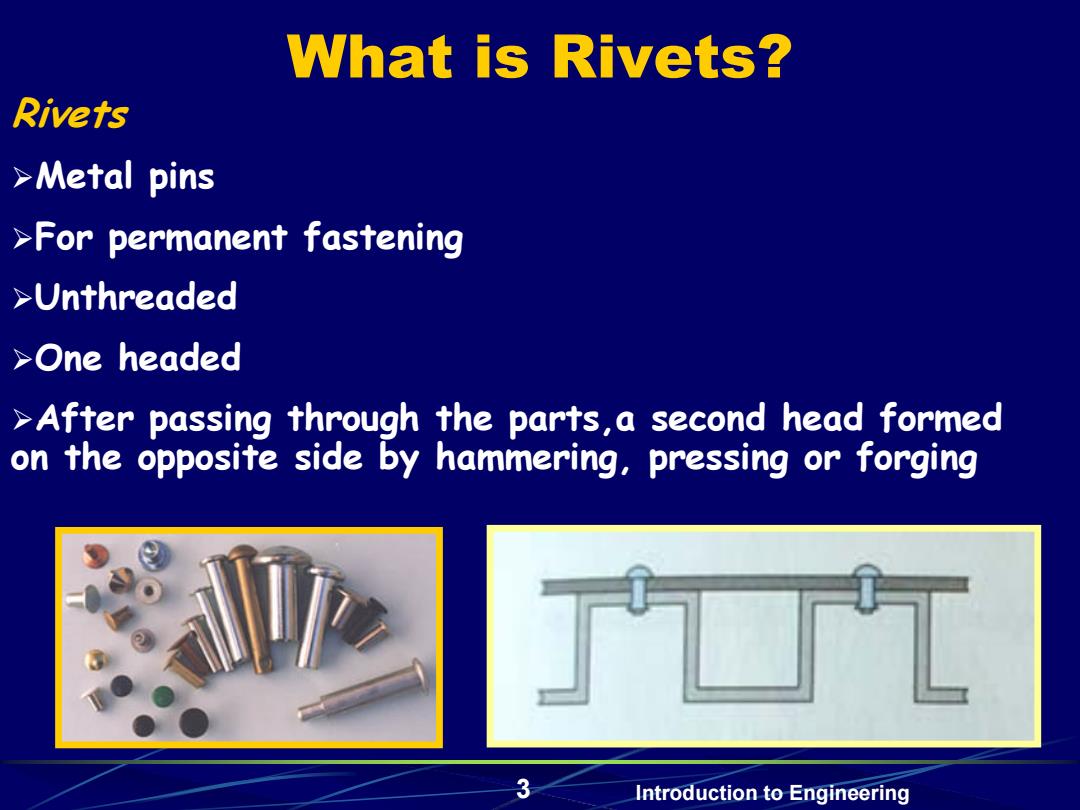
What is Rivets? Rivets >Metal pins >For permanent fastening >Unthreaded >One headed >After passing through the parts,a second head formed on the opposite side by hammering,pressing or forging 3 Introduction to Engineering
3 Introduction to Engineering What is Rivets? Rivets Metal pins For permanent fastening Unthreaded One headed After passing through the parts,a second head formed on the opposite side by hammering, pressing or forging

Applications of Rivets e Aircraft,transportation equipment,and other products requiring considerable joint strength e Buildings,boilers,bridges,and ships Modern riveting machines have greatly expanded their use in fastening smaller components Introduction to Engineering
4 Introduction to Engineering Applications of Rivets Aircraft, transportation equipment, and other products requiring considerable joint strength Buildings, boilers, bridges, and ships Modern riveting machines have greatly expanded their use in fastening smaller components
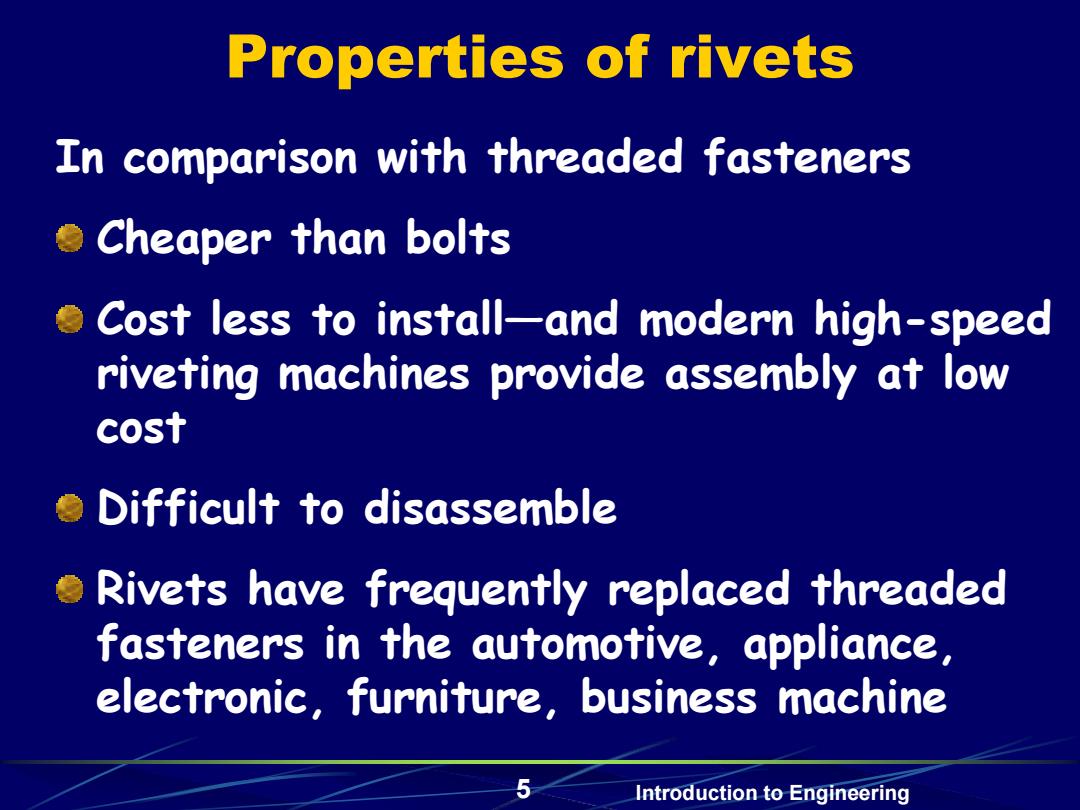
Properties of rivets In comparison with threaded fasteners e Cheaper than bolts e Cost less to install-and modern high-speed riveting machines provide assembly at low cost e Difficult to disassemble o Rivets have frequently replaced threaded fasteners in the automotive,appliance, electronic,furniture,business machine Introduction to Engineering
5 Introduction to Engineering Properties of rivets In comparison with threaded fasteners Cheaper than bolts Cost less to install—and modern high-speed riveting machines provide assembly at low cost Difficult to disassemble Rivets have frequently replaced threaded fasteners in the automotive, appliance, electronic, furniture, business machine
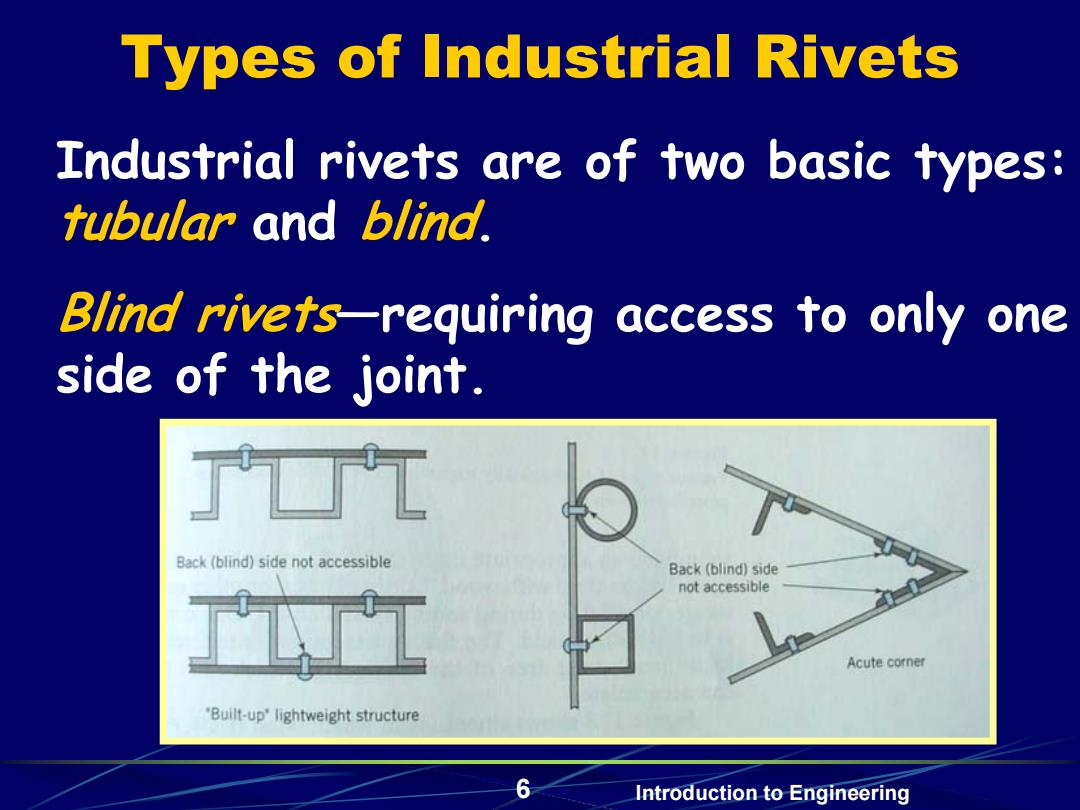
Types of Industrial Rivets Industrial rivets are of two basic types: tubular and blind. Blind rivets-requiring access to only one side of the joint. Back(blind)side not accessible Back(blind)side not accessible Acute corner 'Built-up'lightweight structure 6 Introduction to Engineering
6 Introduction to Engineering Types of Industrial Rivets Industrial rivets are of two basic types: tubular and blind. Blind rivets—requiring access to only one side of the joint
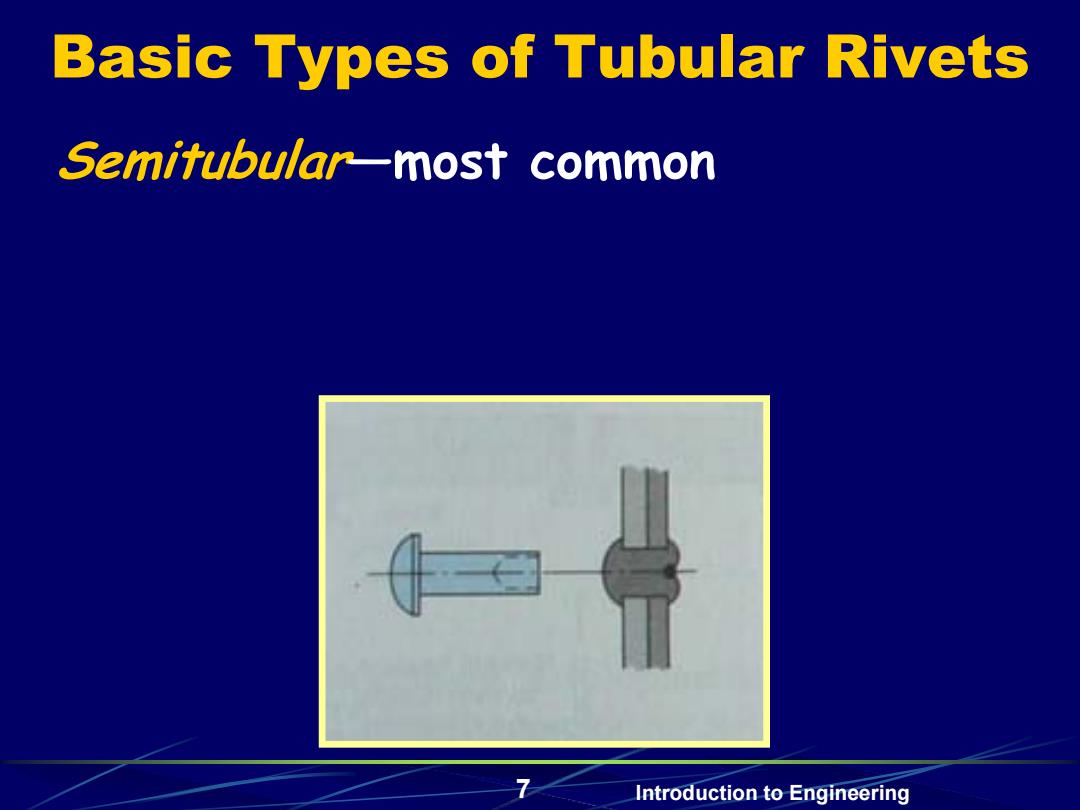
Basic Types of Tubular Rivets Semitubular-most common 7 Introduction to Engineering
7 Introduction to Engineering Basic Types of Tubular Rivets Semitubular—most common

Basic Types of Tubular Rivets Self-piercing rivets-make their own holes as they are installed by a riveting machine Such as full tubular rivet,split rivet and metal-piercing rivet 8 Introduction to Engineering
8 Introduction to Engineering Basic Types of Tubular Rivets Self-piercing rivets—make their own holes as they are installed by a riveting machine. Such as full tubular rivet, split rivet, and metal-piercing rivet
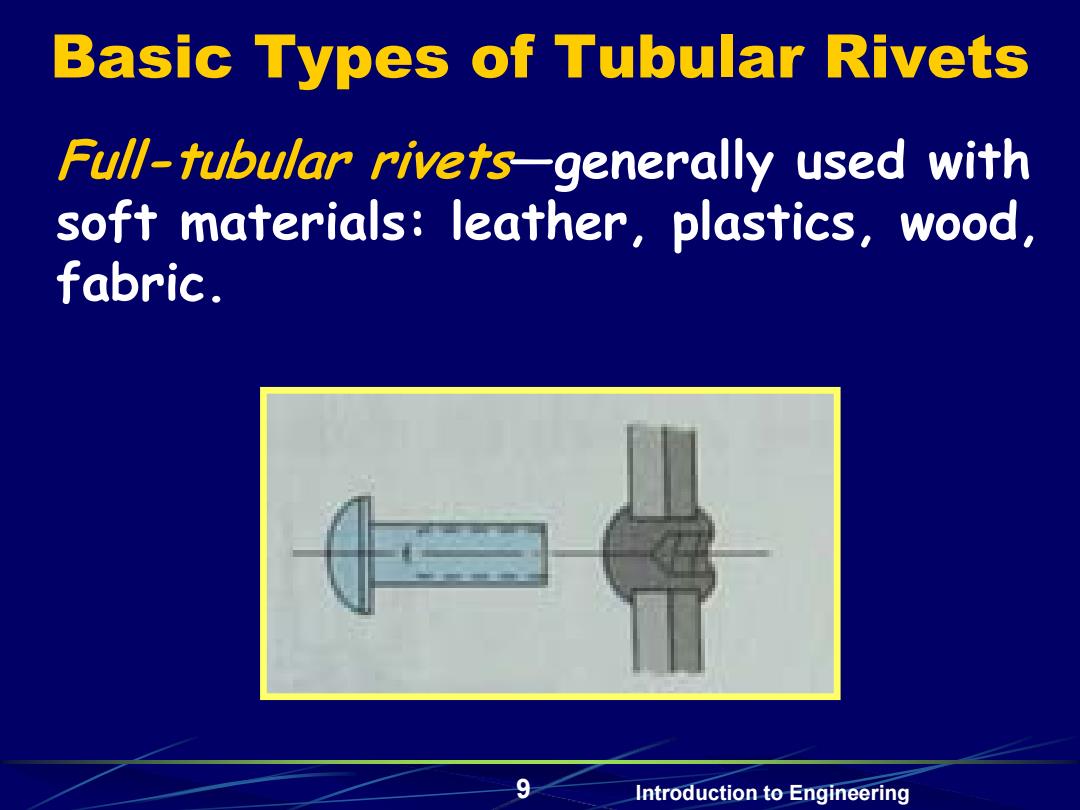
Basic Types of Tubular Rivets Full-tubular rivets-generally used with soft materials:leather,plastics,wood, fabric. Introduction to Engineering
9 Introduction to Engineering Basic Types of Tubular Rivets Full-tubular rivets—generally used with soft materials: leather, plastics, wood, fabric

Basic Types of Tubular Rivets Split rivet-used to join metals. Metal-piercing rivet-can fasten hard metal. Split rivet metal-piercing rivet 10 Introduction to Engineering
10 Introduction to Engineering Basic Types of Tubular Rivets Split rivet—used to join metals. Metal-piercing rivet—can fasten hard metal. Split rivet metal Split rivet metal-piercing rivet piercing rivet